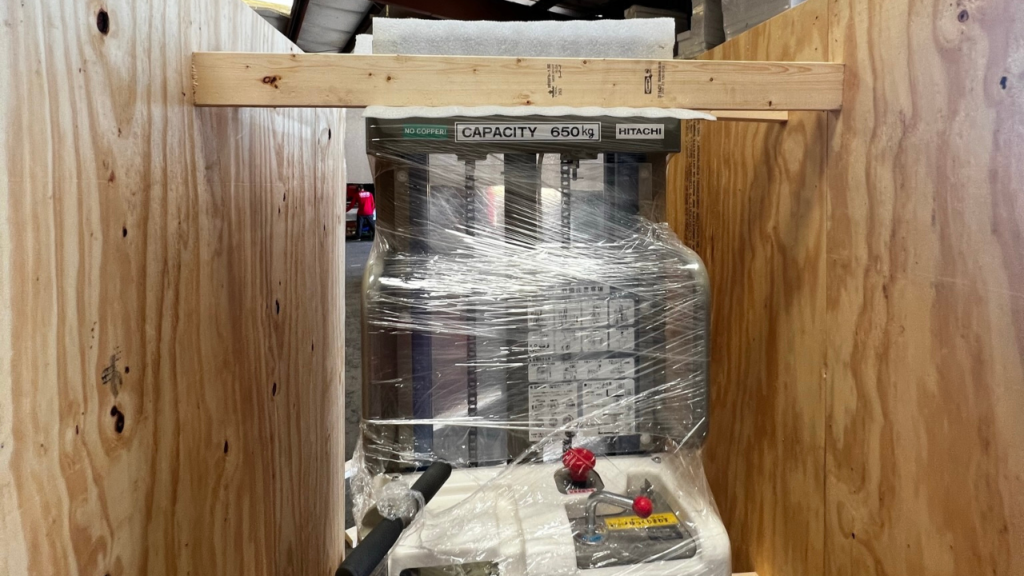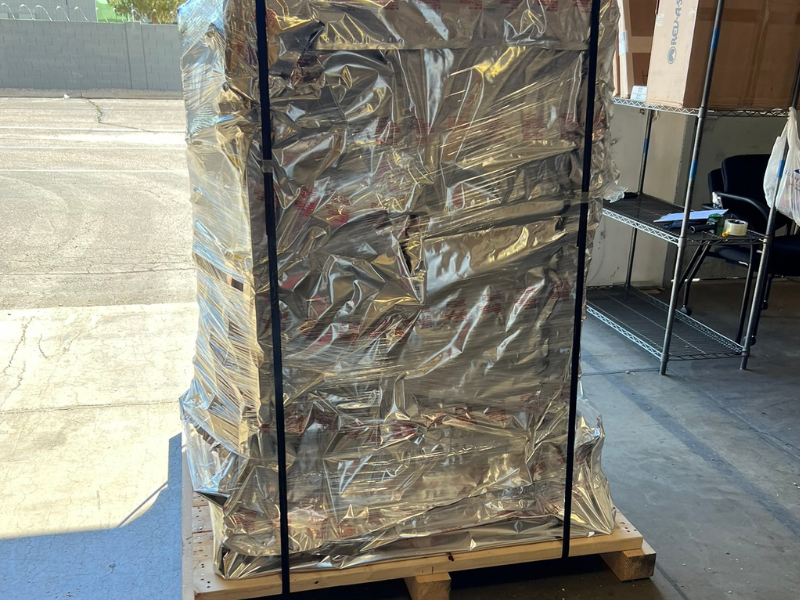Proper load securement is critical to ensuring that valuable equipment reaches its destination without damage. Whether shipping industrial machinery, aerospace components, medical devices, or sensitive electronics, improper securement can lead to shifting, tipping, or impact damage during transit.
By using blocking, bracing, and tie-downs, Crating Technology helps customers protect their shipments, prevent costly damages, and comply with industry regulations. This blog explores the importance of load securement and the best techniques for ensuring a damage-free transport experience.

Why Load Securement Matters
Preventing Damage from Movement
During transportation, cargo is exposed to vibrations, sudden stops, and directional shifts that can cause unsecured items to slide, tip, or collide. Proper securement minimizes movement within the crate, reducing the risk of scratches, dents, or more severe structural damage.
Ensuring Compliance with Safety Regulations
International and domestic shipping regulations require cargo to be properly secured. Governing bodies such as the U.S. Department of Transportation (DOT) and International Maritime Organization (IMO) have strict guidelines to ensure loads do not pose a safety hazard.
Reducing Liability and Financial Losses
Inadequate load securement can lead to cargo claims, insurance disputes, and replacement costs for damaged equipment. Investing in proper securement protects the shipper and recipient from unnecessary losses.
Key Load Securement Techniques
Blocking and Bracing
Blocking and bracing are essential for stabilizing shipments inside a crate or shipping container. These methods involve:
- Blocking – Using custom-cut wood, foam, or composite materials to prevent lateral (side-to-side) movement within the crate.
- Bracing – Installing internal reinforcements, such as diagonal wooden supports or custom braces, to prevent tipping or shifting during transit.

Best Use Cases:
- Heavy industrial equipment that needs to remain stationary.
- Fragile medical devices that must be stabilized to prevent jarring.
- Oversized machinery requiring reinforced bracing to keep it secure.

Tie-Downs and Strapping
Tie-downs secure cargo using ratchet straps, chains, or tensioned bands to hold equipment in place. These straps absorb minor vibrations and prevent shifting.
Common tie-down methods include:
- Ratchet Straps – Adjustable and strong, ideal for securing heavy equipment.
- Steel or Nylon Bands – Used for bundling items together and preventing movement.

Best Use Cases:
- Aerospace components that require vibration-dampening security.
- Medical imaging equipment where slight movements could misalign internal components.
- Palletized shipments that need external banding for structural integrity.
Cushioning and Dunnage
To absorb shocks and vibrations, additional cushioning materials can be placed inside the crate:
- High-Density Foam Inserts – Ideal for fragile electronics and precision tools.
- Anti-Static Packaging Materials – Essential for semiconductor and electrical components.
Best Use Cases:
- Semiconductor shipments requiring electrostatic discharge (ESD) protection.
- Delicate aerospace instruments that cannot withstand impact forces.
- Custom machinery parts that must remain stationary during transport
Shock-Mounted Bases and Floating Cradles
For ultra-sensitive cargo, shock-mount base technology can be incorporated into the crating design. This method uses:
- Suspension-mounted cradles that absorb impact and vibration.
Best Use Cases:
- Satellite components and optical lenses requiring extreme precision.
- Military-grade electronics with strict impact resistance requirements.
- High-value medical imaging machines that must be recalibrated after even minor shifts.
Real-World Application: Securing a Multi-Million Dollar CNC Machine for Transit
The Challenge
A manufacturing client needed to transport a custom CNC machine across the country. Due to the machine’s high precision and value, even minor shifting during transit could cause misalignment and calibration issues.
Crating Technology’s Solution
- Designed a custom wooden crate with internal blocking and bracing to hold the machine in place.
- Installed foam-lined shock absorbers at key points to reduce vibrations.
- Used heavy-duty ratchet straps to secure the equipment to the base, preventing movement.
- Applied moisture-resistant lining to protect against environmental exposure during transit.
Outcome
✅ The CNC machine arrived without any alignment issues.
✅ The client was able to install the equipment immediately, avoiding costly recalibrations.
✅ The manufacturer adopted Crating Technology’s load securement standards for future shipments.
Conclusion: Why Load Securement is Essential for Safe Shipping
Proper load securement plays a critical role in preventing cargo damage, ensuring regulatory compliance, and protecting high-value shipments. Whether using blocking, bracing, tie-downs, or cushioning, Crating Technology specializes in designing custom solutions tailored to each industry’s specific needs.
For expert crating and securement services that protect your cargo from start to finish, contact Crating Technology today.



